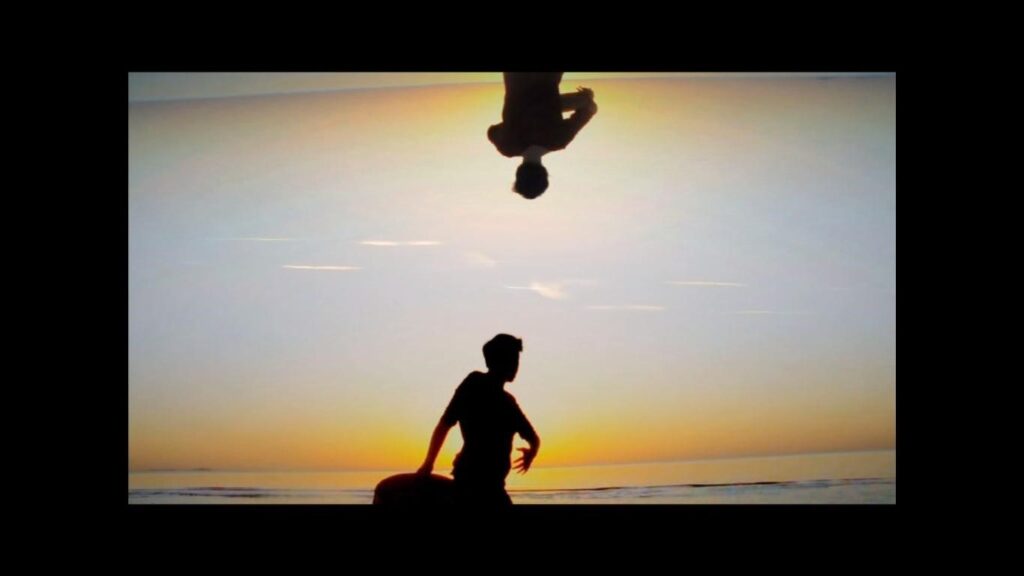Art work: “Shoshë” / ”Sieve”
Author: Erëmira Çitaku
Year: 2010
Genre: Video-performance with music instruments, voice, and dance performance with sieve
“Shoshë” or, in English “Sieve”, is an art work of the flutist and artist Erëmira Çitaku. It is a video performance with music instruments in which the artist herself and the other musicians perform also live in front of an audience. The live performance includes flute, voice (Besa Berberi and Luan Durmishi), violin (Visar Kuqi), and piano combined with cans (Liburn Jupolli), all positioned in front of a video projection. Çitaku performs not only with flute, but also with a sieve which is filled with dry beans. The music, written by Çitaku, is represented as an integral part of this art work.
The main figure of the video “Shoshë” is a dancer who, with a sieve in her hand, makes smooth and harmonious movements in front of an idyllic view of a quiet sea. This impression is supported by the fact that the scene happens during the sunset. This entire set up is mirrored upon a horizontal axis, but with the dancer’s transformed timing. Through this picture, the artist reflects upon the fact that a person can have different views or perspectives on the same event, but in different momentums; a person can use different lines on the horizon as a starting point to analyze an issue. Or, a person needs to reflect on himself, on his own decisions, in order to deeper understand a question, to get to its essential meaning. A person should sift the facts in order to achieve adequate conclusions. The dancer continues her performance with the sieve beside her shadow, or face-to-face with her shadow. Moreover, together with the sieve, she enters her own shadow. One’s confrontations with himself, one’s discovery of himself through entering himself, respectively through passing by his own shadow, are topics that substantially come out from this perspective. The video ends with the view of the dancer and her sieve in front of two sunsets. She continues dancing between them and, at the end, turns toward the audience, leaving the scene while throwing the sieve behind her.
The dancer is now representing a person who’s happy with her own achievements, with the sifting of the things around her, with the exporation and the discovery of her environment.
She now doesn’t need the sieve to sift. Finally, we see the sand of the beach and, on it, the word “Shoshë”/”Sieve”, which leaves the audience to associate freely within the explanations, processing, or selectiveness of all these informations, with which the dancer was confronted throughout her dance with the sieve.
© Dr. Penesta Dika 2010
This video- performance was presented in these venues:
- 8.03.2010 Belgium – Louven- Lemmens Institute
- 1.03.2011 Kosova- Center for Contemporary Art- Stacion
- 23.09.2011 Germany Leipzig- Theatre – “Lofft” Leipzig v 24.09.2011 Germany Dresden- Societaets Theater
- 04.12.2012 France – Paris- Theatre “Le Palace” Paris
